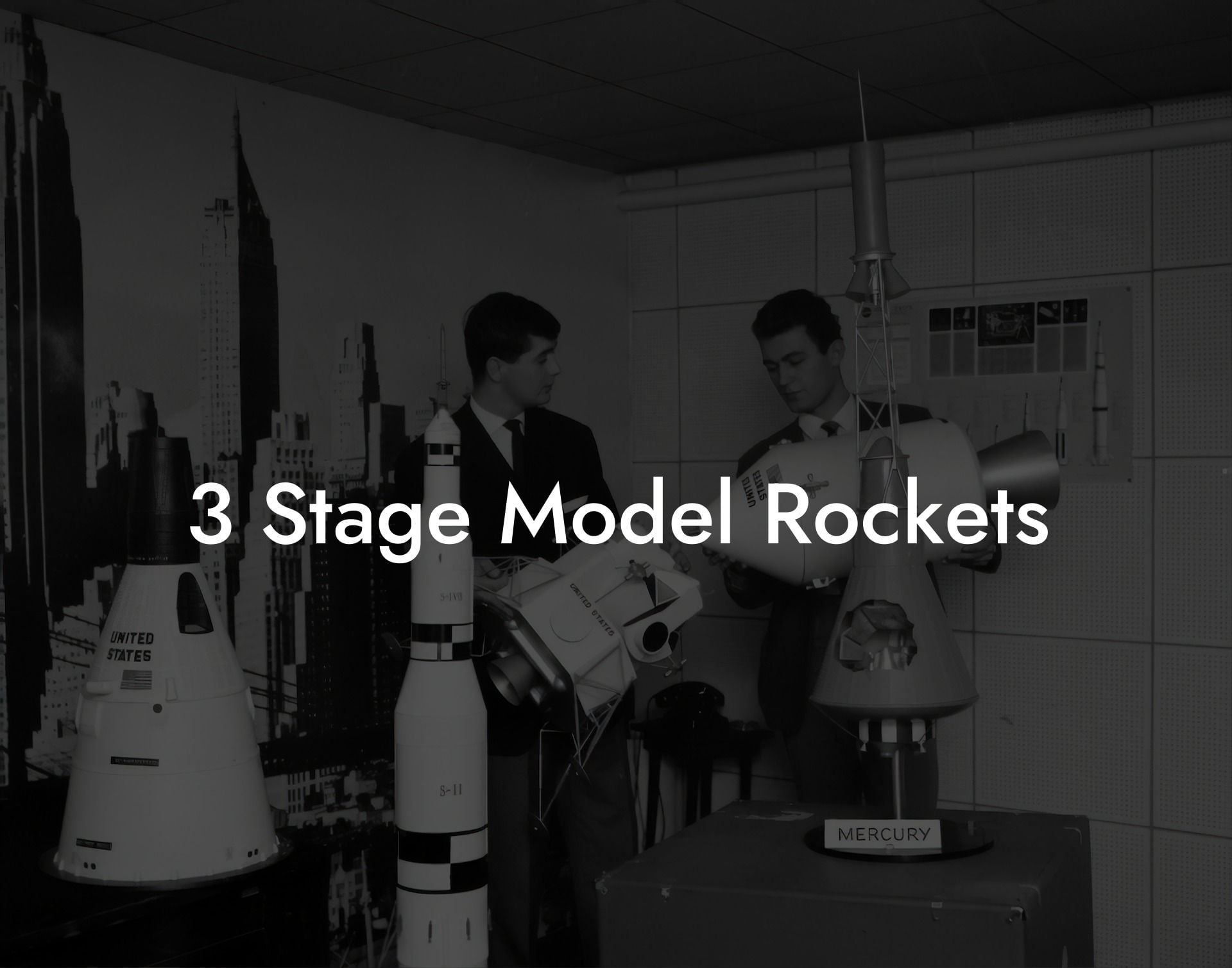Are you ready to take your model rocketry skills to new heights? If so, 3 stage model rockets might be just what you're looking for. These intricate and impressive rockets not only offer a unique challenge for hobbyists, but also deliver some of the most awe-inspiring launches you'll ever witness. In this guide, we'll delve into the world of 3 stage model rockets, exploring their components, functionality, and how you can successfully build and launch your very own.
3 Stage Model Rockets Table of Contents
What is a 3 Stage Model Rocket?
A 3 stage model rocket, also known as a multistage rocket, comprises three separate "stages" or segments that function independently to propel the rocket into the sky. Each stage has its own motor and is designed to operate in a specific sequence, allowing the rocket to reach higher altitudes than single-stage rockets.
How Do Multistage Rockets Work?
Multistage rockets utilize a concept known as "staging," where the components are stacked in vertical order, with the lower stage housing the motor that propels the rocket initially. Once the first stage's motor has burned out, it detaches and falls away, allowing the second stage to ignite its motor and continue the ascent. Similarly, the same process is repeated for the third stage after the second stage has completed its job.
Advantages of 3 Stage Rockets
- Higher Altitudes: Due to their sequential propulsion, multistage rockets are able to reach much higher altitudes than single-stage rockets. The shedding of each stage's weight allows the remaining stages to be more efficient in propelling the rocket further.
- Intricate Builds: For hobbyists who enjoy the challenge of assembling complex model rockets, 3 stage rockets provide a welcome opportunity to test their skills and patience.
- Improved Recovery: With their increased altitude, 3 stage rockets often have more time to deploy recovery systems such as parachutes, ensuring a gentler and more controlled landing.
Building a 3 Stage Model Rocket
Constructing a 3 stage rocket can be both exhilarating and challenging. Below is a brief overview of the general steps involved in building such a model rocket:
1. Assemble the Stages
Begin by assembling each stage separately, paying close attention to the manufacturer's instructions. This will typically involve attaching the motor mount assembly, body tube, and fins for each stage.
2. Connect the Stages
With the individual stages assembled, it's time to connect them together using couplers or other hardware provided by the manufacturer. Ensure that the stages are securely attached and that the ignition wires from each motor can run uninterrupted through each stage.
3. Install Recovery Systems
Attach your chosen recovery system, such as a parachute or streamer, to the rocket's payload section or final stage. Ensure that the recovery system is folded and packed properly according to the instructions.
4. Painting and Finishing Touches
Now that your 3 stage rocket is assembled, it's time to add some flair with paint and decals. Make sure to use paint that is compatible with your rocket's materials, and apply a clear coat for added protection.
3 Stage Model Rockets Example:

An example of a popular 3 stage model rocket is the Estes Hi Flier XL (pictured above), which showcases the unique design and impressive performance capabilities of multistage rockets. Reaching altitudes of over 3,200 feet, the Hi Flier XL utilizes three Estes C6-0 motors in its first and second stages, and a C6-7 motor in the final stage for maximum performance.
There you have it! The thrill and complexity of 3 stage model rockets make them a fascinating addition to any rocketry enthusiast's collection. With patience, skill, and the right knowledge, you can enjoy the unique challenges and unforgettable launches that these rockets provide. So what are you waiting for? Start exploring the vast world of multistage rockets today and take your rocketry adventures to new heights!
If you found this guide helpful, don't forget to share it with fellow rocket enthusiasts, and be sure to explore other comprehensive guides on Austin Rockets for all your model rocketry needs.













